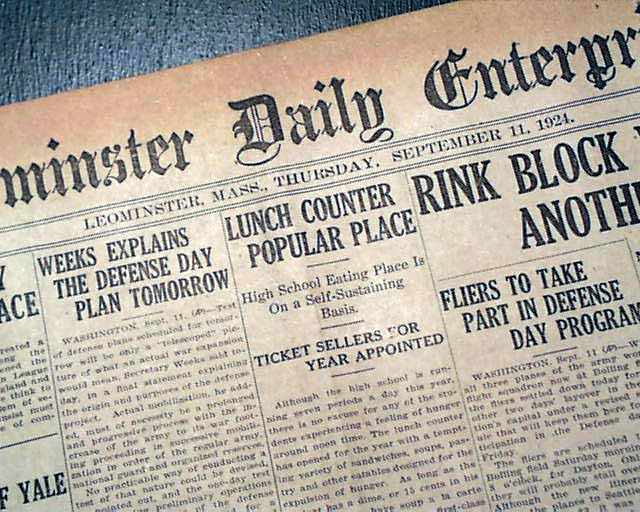Home >
Hanapepe massacre in Hawaii.....
Hanapepe massacre in Hawaii.....
Item # 564285
Currently Unavailable. Contact us if you would like to be placed on a want list or to be notified if a similar item is available.
September 11, 1924
LEOMINSTER DAILY ENTERPRISE, Leominster, Massachusetts, September 11, 1924
* Hanapepe Massacre
* Island of Kauai - Hawaii
This 8 page newspaper has a one column headline on the front page: "HONOLULU STRIKE RIOTING IS DEADLY".
A short 1st report on the Hanapepe massacre on the Island of Kauai in the Hawaiian Islands.
Other news of the day. Usual browning with little margin wear, otherwise good. Should be handled with care.
wikipedia notes: On September 9, 1924, toward the end of a long-lasting strike of Filipino sugar workers on Kauaʻi, Hawaiʻi, local police shot dead sixteen strikers in what came to be known later as the Hanapēpē Massacre. As reprehensible as it may appear in retrospect, the incident did not arouse contemporary public censure nor bring into question the legitimacy of the coercive agents or their actions.
By 1922 Filipino labor activist Pablo Manlapit had organized a new Filipino Higher Wage Movement which numbered some 13,000 members. In April 1924, it called for a strike on the island of Kauaʻi, demanding $2 a day in wages and reduction of the workday to 8 hours. As they had previously, the plantation owners used armed forces, the National Guard, and strike breakers paid a higher wage than the strikers demanded. Again workers were turned out of their homes. Propaganda was distributed to whip up racism. Spying and infiltration of the strikers' ranks was acknowledged by Jack Butler, executive head of the Hawaiian Sugar Planters' Association.
Strike leaders were arrested in attempts to disrupt workers' solidarity, and people were bribed to testify against them. On September 9, 1924, outraged strikers seized two strike breakers at Hanapēpē, Kauaʻi and prevented them from going to work. The police, armed with clubs and guns, came to union headquarters to 'rescue' them. Filipino strikers were armed only with homemade weapons and knives.
The Associated Press flashed the story of what followed across the United States in the following words: Honolulu. - Twenty persons dead, unnumbered injured lying in hospital, officers under orders to shoot strikers as they approached, distracted widows with children tracking from jails to hospitals and morgues in search of missing strikers - this was the aftermath of a clash between cane strikers and workers on the McBryde plantation, Tuesday at Hanapepe, island of Kauai. The dead included sixteen Filipinos and four policemen.
Category: The 20th Century












